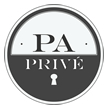Want your meeting attendees to feel better and be more productive?
Healthy eating habits contribute to increased productivity, more positive employee morale and daily well-being.
Choose a variety of foods that are low-fat, low in sugar, and will be low in calories. Remember to read labels to understand the ingredients in foods and to keep portion sizes reasonable. Keep in mind that a typical serving size of fruits or vegetables is 1/2 cup.
Look for a food provider that offers healthy menu alter- natives including low-sodium and low-fat options. Choose healthy foods and use the following suggestions as a guide:
When planning light refreshments consider fresh or dried fruit like raisins or cranberries.
Suggestions to increase fruit and vegetable servings:
• Fruit platters with low-fat yogurt.
• Vegetable platters with low-fat dips.
• Dried and whole pieces of fruit.
• Fruit-flavoured yogurt.
• Consider fruit salad as a dessert.
• Offer at least one vegetable for meals.
• Salads (with dressing available on the side).
• Fruit smoothies with a variety of seasonal fruits.
• 100% fruit and/or vegetable juice.
• Emphasise vegetables for sandwiches and/or wraps
• Breakfast refreshments should include fresh fruit, yogurt, low-fat milk, and whole grain foods. Avoid serving pastries and donuts for breakfast.
• Veggie trays are a colorful and healthy option. Make sure the dip is made with low-fat or fat-free ingredients! Serve salsa or bean dip for added nutrition.
• Cold water is a refreshing drink during a meeting. If the budget allows, purchase small bottles of water for a simple beverage solution.
• Serve small bagels, or bagels that are cut in half or cut in quarters, and use mini muffins rather than large high calorie versions.
• Slice cheese thinly or cut into small chunks for a bite-sized piece.
As you start to plan the food for your next business function, here are two key questions to ask:
1. Who is the audience?
• Dietary requirements (vegetarian options, religious, and cultural considerations)
• Age
• Industry
• Expectations/perceptions about what you serve (e.g. lobster vs. sandwiches)
2. What is the context?
• Time of day
• Formal vs. informal
• Purpose of meeting
• Activity, participation, and alertness required
By promoting and supporting more physical activity and healthy eating in your workplace, everyone will enjoy the benefits.







